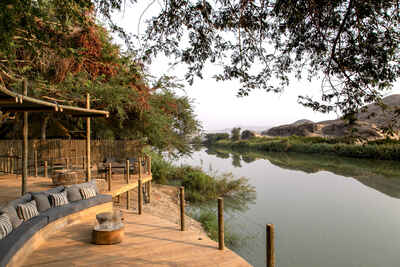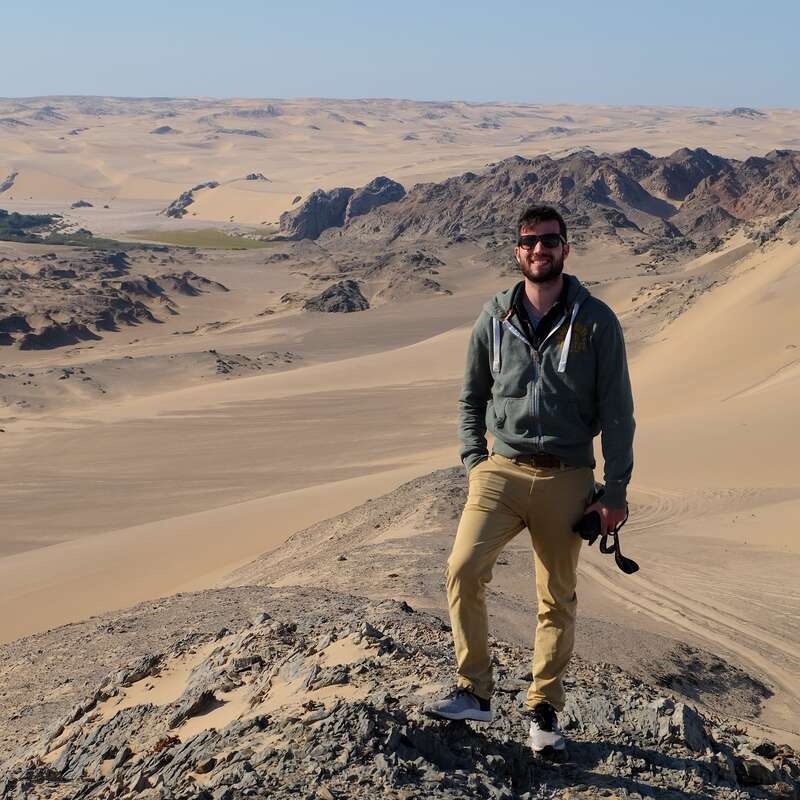About Serra Cafema
Serra Cafema stands as an oasis of luxury in perhaps Namibia's most remote wilderness.
nestled at the extreme north-western tip where the expansive Hartmann Valley culminates. This luxurious lodge nestles in a lush belt of riverine forest beside the Kunene River, overlooking the mountains of Angola’s Iona National Park beyond. The juxtaposition of this vibrant river against the arid desert and rugged mountains creates an enchanting and unique setting.
Serra Cafema harmoniously combines one of Namibia's most remote location with an exceptionally luxurious camp, creating a truly unique and almost magical destination. Whether exploring Martian landscapes, meeting the Himba tribespeople who call this harsh land home, or simply indulging in ultimate luxury, Serra Cafema offers arguably the ultimate escape from everyday life.
Our view
Serra Cafema harmoniously combines one of Namibia's most remote location with an exceptionally luxurious camp, creating a truly unique and almost magical destination. Whether exploring Martian landscapes, meeting the Himba tribespeople who call this harsh land home, or simply indulging in ultimate luxury, Serra Cafema offers arguably the ultimate escape from everyday life.
Accommodation
8 suites
Children
Best for 16+
Open
All year
Activities

4WD Safari

Birdwatching

Boat trip

Cultural excursion

Guided walking safari

Night drive

Private activities

Quad-biking
Traveller reviews of Serra Cafema
36 real, un-edited reviews from Expert Africa's travellers.
Arrived 7 Jun 2025, 3 nights
"Serra Cafema review"
Overall rating: Excellent
Arrived 3 Nov 2022, 2 nights
"Serra Cafema review"
Overall rating: Excellent
Arrived 3 Nov 2022, 2 nights
"Serra Cafema review"
Overall rating: Excellent
Arrived 1 Nov 2022, 3 nights
"Almost in Angola"
Overall rating: Excellent
Arrived 24 Jul 2022, 3 nights
"Serra Cafema review"
Overall rating: Excellent
Arrived 25 May 2022, 3 nights
"Pure Magic"
Overall rating: Excellent
Arrived 28 Mar 2022, 3 nights
"Serra Cafema review"
Overall rating: Excellent
Arrived 27 May 2019, 3 nights
"Serra Cafema review"
Overall rating: Excellent
Arrived 8 Oct 2018, 3 nights
"The new Serra Cafema"
Overall rating: Excellent
Arrived 22 Sep 2017, 3 nights
"Serra Cafema review"
Overall rating: Excellent
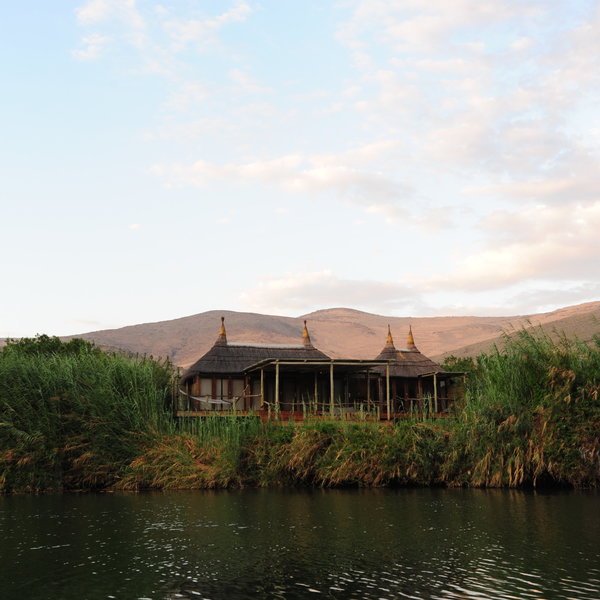
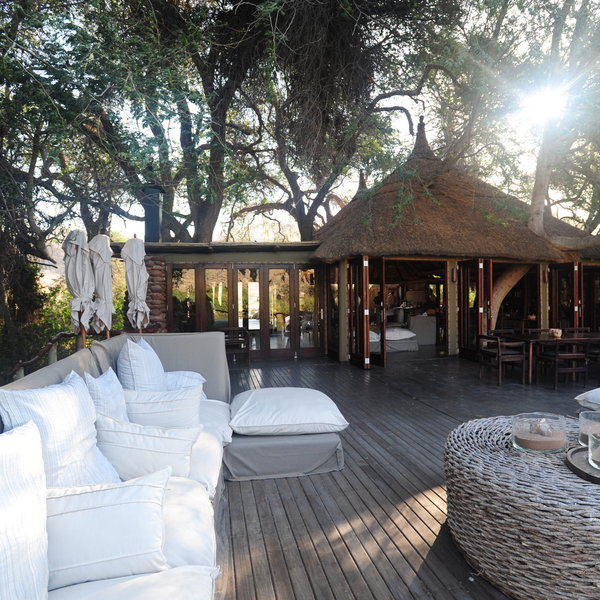
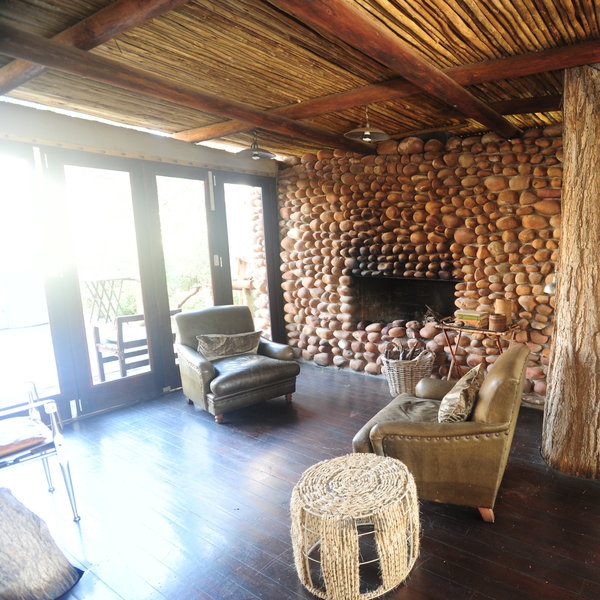
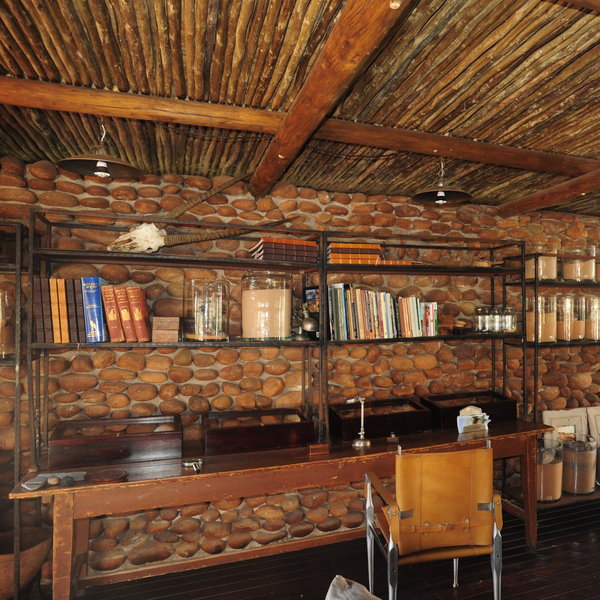
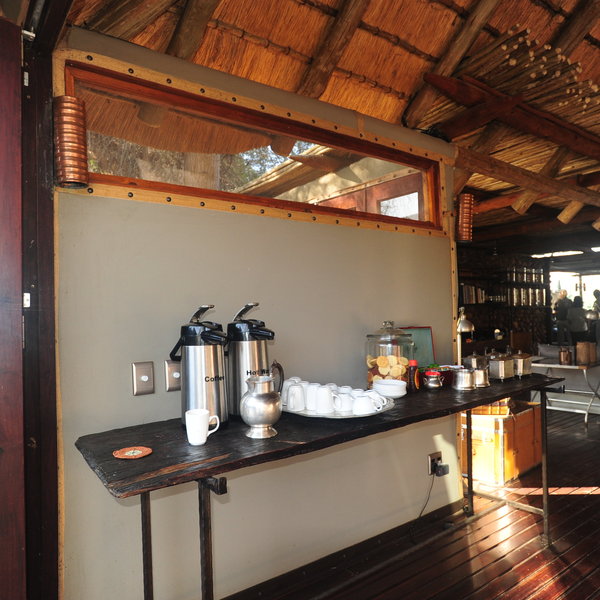
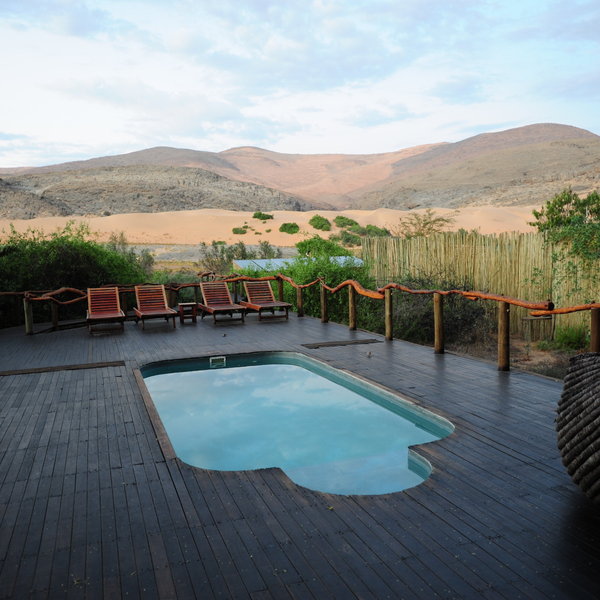
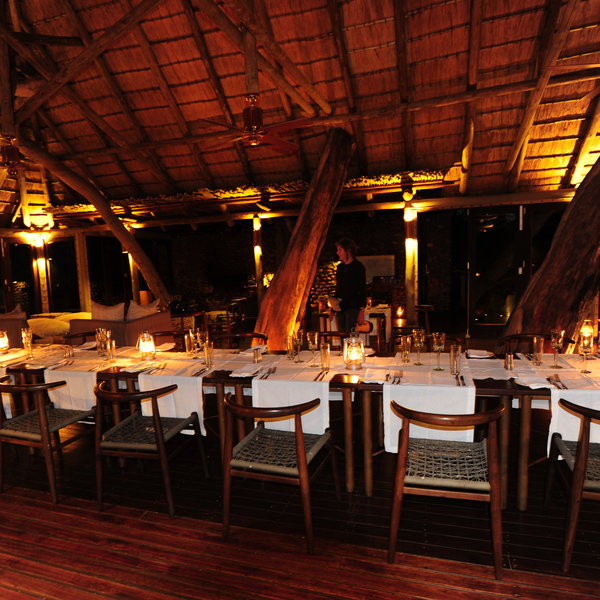
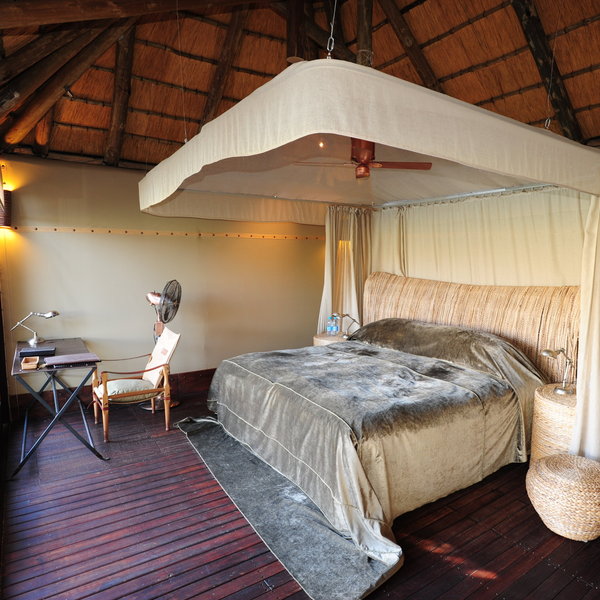
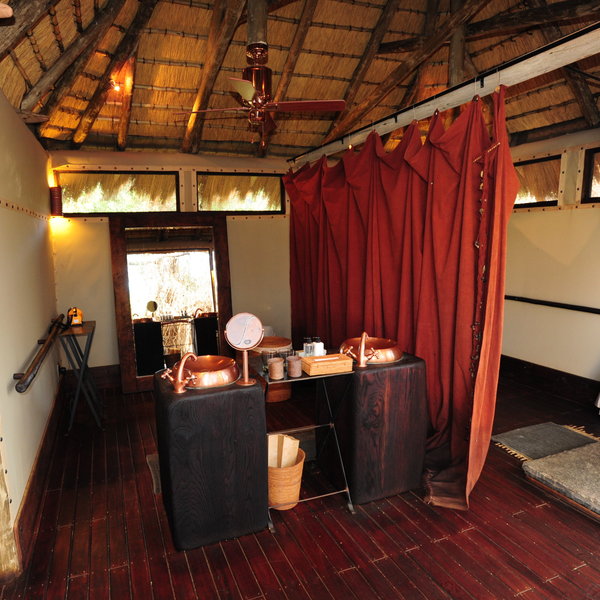
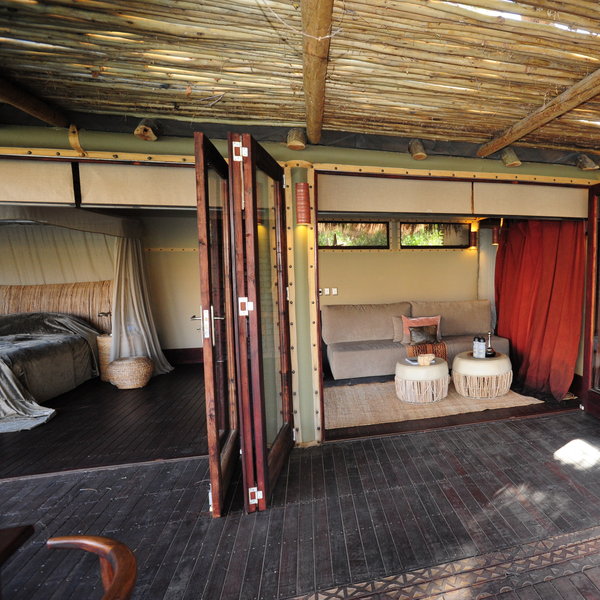
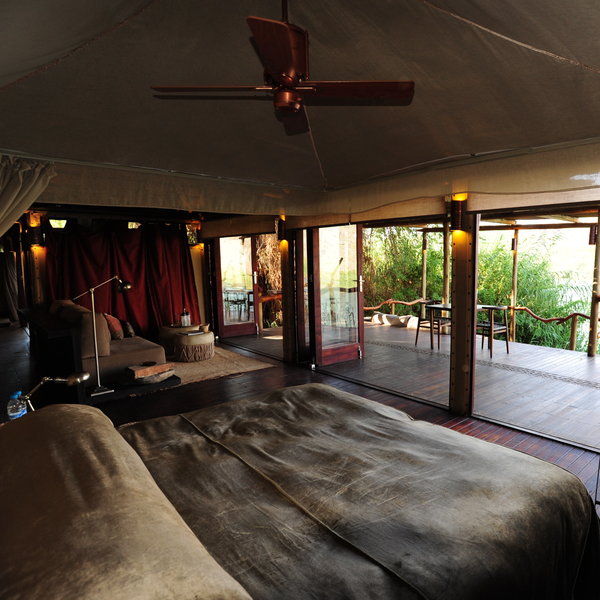
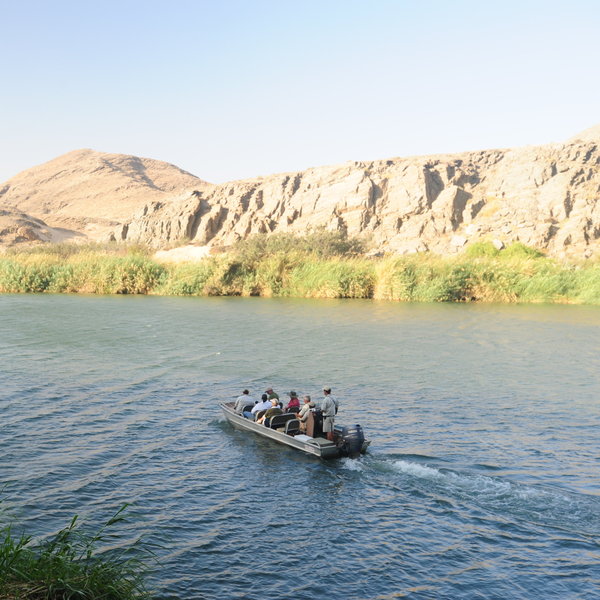
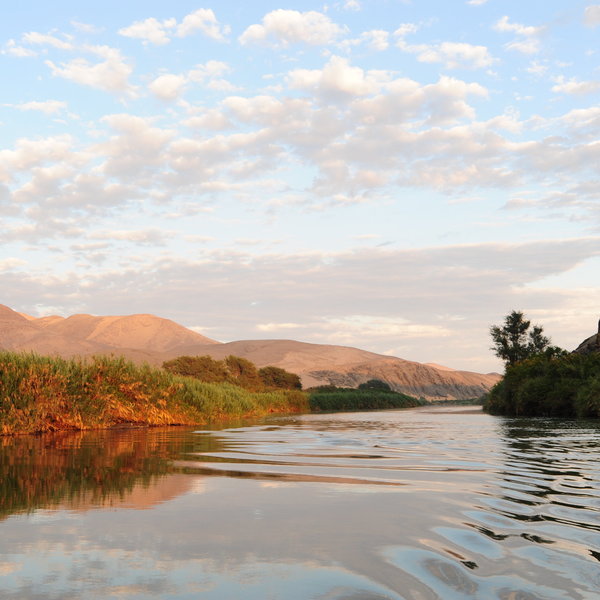
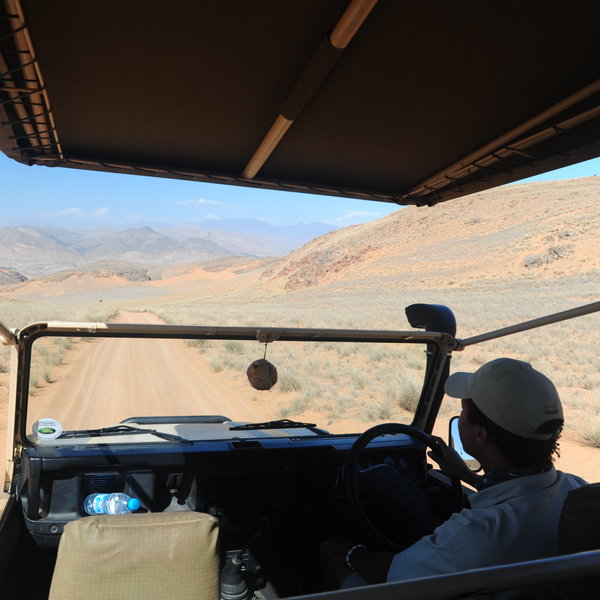
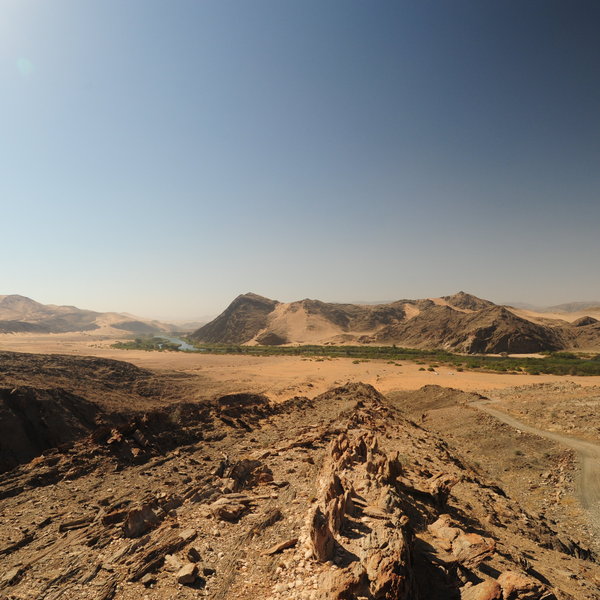
Expert Africa's gallery
When we travel we take lots of photos ourselves to give you a real and un-edited view of the safaris. See our 39 pictures of Serra Cafema to get the candid view.
View gallerySafaris visiting Serra Cafema
Just ideas, we'll always tailor-make a trip for you
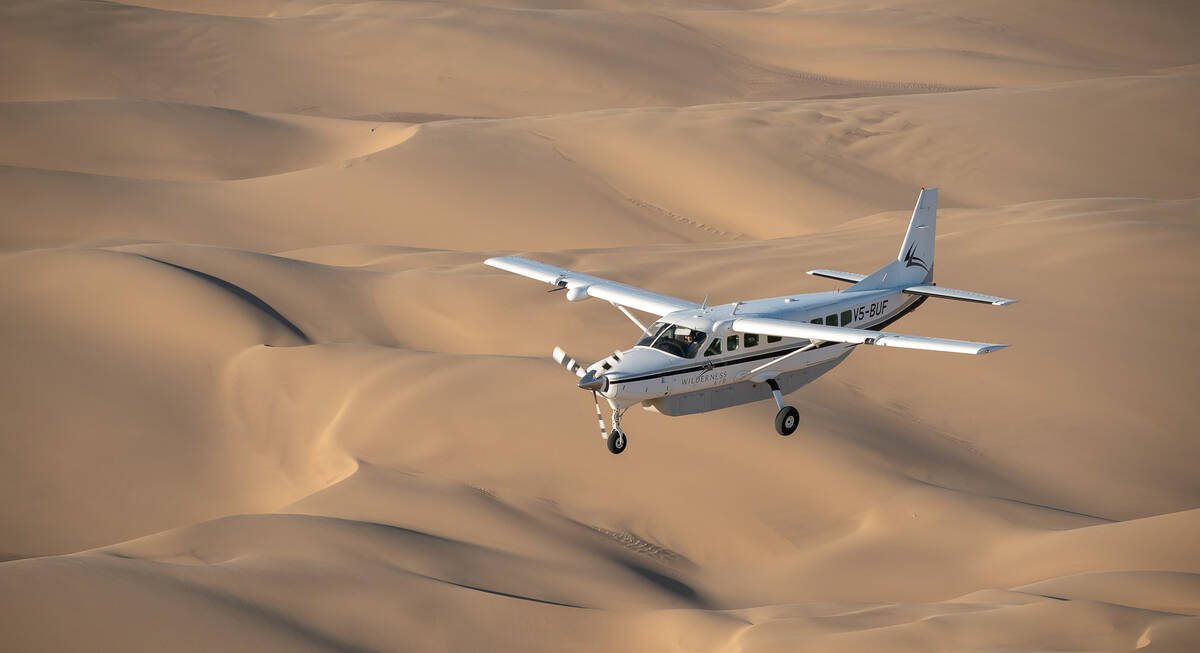
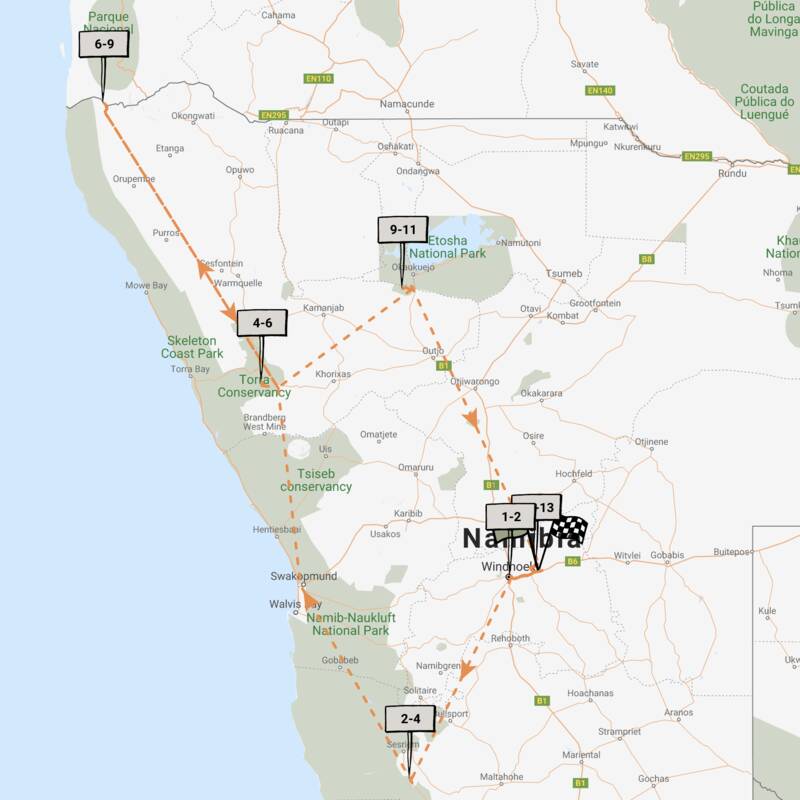
Goshawk Fly-in Safari
12 days • 6 locations • 1 country
WINDHOEK AIRPORT TO WINDHOEK AIRPORT
Discover Namibia’s remarkable landscapes, fascinating wildlife and unique cultures on this luxury adventure flying between a selection of the very best camps and lodges in the country.
Visiting NamibRand, Damaraland and 3 other areas
US$13,640 - US$20,450 per person
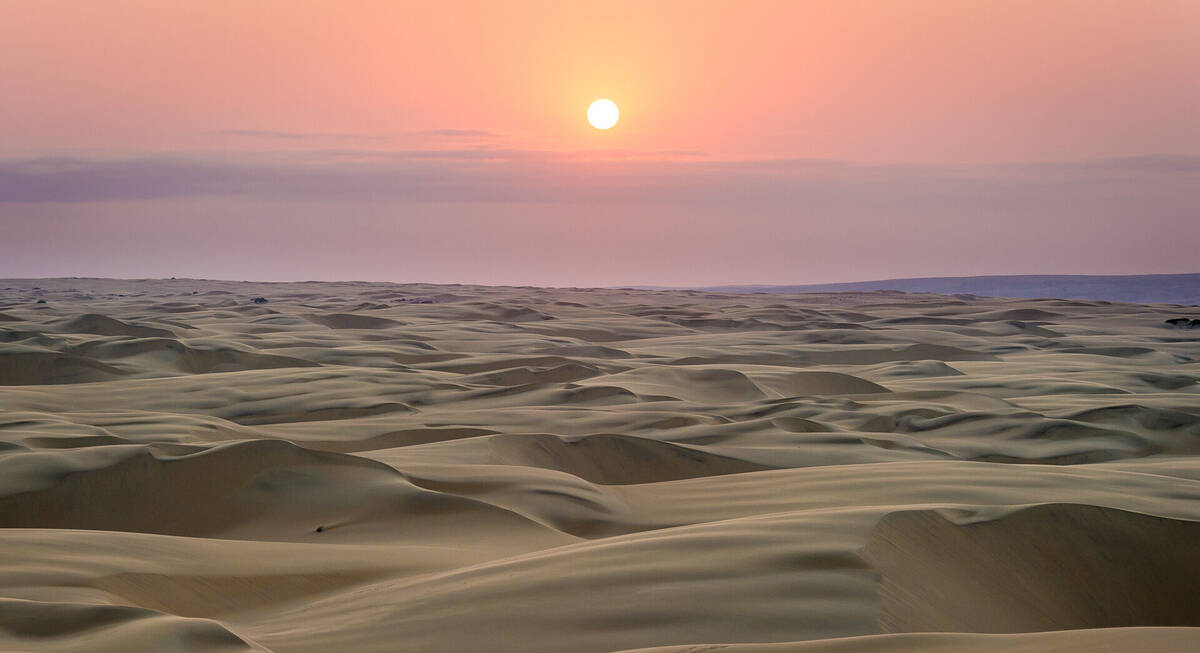
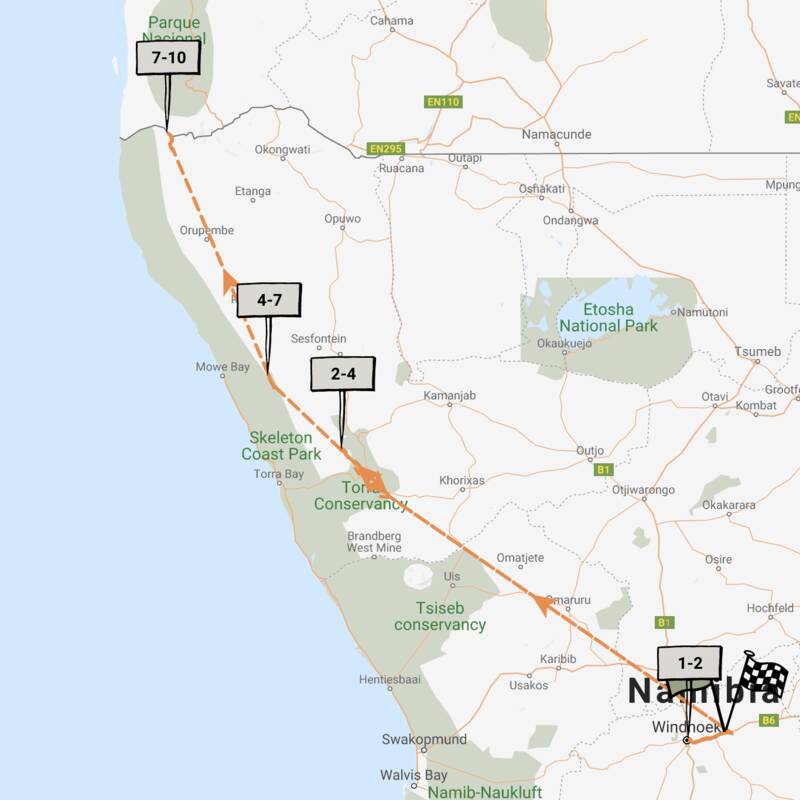
Ruppell's Korhaan Fly-in Safari
9 days • 4 locations • 1 country
WINDHOEK AIRPORT TO WINDHOEK AIRPORT
Explore Namibia’s remotest wildernesses while staying at some of the most exclusive luxury camps in the country. This epic fly-in safari will deliver otherworldly landscapes, fascinating wildlife and genuine cultural experiences.
Visiting Damaraland, Skeleton Coast and 1 other area
US$11,470 - US$16,990 per person
Serra Cafema: Our full report
Serra Cafema stands as an oasis of luxury in perhaps Namibia's most remote wilderness.
nestled at the extreme north-western tip where the expansive Hartmann Valley culminates. This luxurious lodge nestles in a lush belt of riverine forest beside the Kunene River, overlooking the mountains of Angola’s Iona National Park beyond. The juxtaposition of this vibrant river against the arid desert and rugged mountains creates an enchanting and unique setting.
Embarking on the journey to Serra Cafema is an adventure in itself. Light aircraft flights from Windhoek to the Hartmann Valley airstrip take three to four hours over the undulating hills of the Central Highlands, weaving through valleys, mountains of Damaraland and on to the grassy plains and dunes of the Marienfluss. The flight often includes a refueling stop at either Doro Nawas or perhaps Hoanib Skeleton Coast Camp. From the airstrip, it’s a four-hour drive to the camp through surreal, otherworldly landscapes. It is hard to put into words just how remote this camp feels.
Due to its extreme remoteness, visits to Serra Cafema are infrequent compared to more accessible camps in Namibia.
Serra Cafema, strategically built on the riverbanks to mitigate high summer temperatures, boasts eight canvas and thatch suites perched on wooden decks with unparalleled river views. The suites feature large twin or king-size beds adorned with luxurious bedding, draped in mosquito nets, and equipped with ceiling fans for comfort during the hotter months (October to February). Each suite includes a tea and coffee station, a spacious lounge area, and a writing desk with views through large glass windows over a private, wrap-around deck facing the river and the mountains of Angola. The ensuite bathroom offers his and hers basins, indoor and outdoor showers, and a separate toilet. The décor seamlessly blends rustic elegance with modern comfort, incorporating natural materials, locally sourced crafts, and earthy tones to create a warm and inviting atmosphere.
Connecting the suites are raised wooden walkways leading to the main area constructed with wood, glass, and thatch. Perched on the riverbank amid ancient riverine woodland, this central hub includes indoor and outdoor dining areas, a bar, a small library, and a small pool surrounded by lounges and parasols.
Serra Cafema offers a diverse range of activities that immerse travellers in the region's unique ecosystems. Guided nature walks, boat trips and nature drives provide an opportunity to explore this untouched wilderness and discover the fascinating flora and fauna that have adapted to the harsh desert environment. The camp's proximity to the river and surrounding desert provides excellent birdwatching opportunities, with a unique combination of avian species.
A visit to local Himba communities is a must, facilitated by the camp's close ties to the community, evident in the employment of local staff and support for a subsidised shop at the camp (the nearest town is hundreds of miles away). On our visit in 2018, we were humbled by the warm welcome and friendliness of the ladies who showed us a little of their way of life; few places offer such sensitive and genuine cultural encounters.
For the more adventurous, quad biking excursions over the vast expanse of the dunes offer a thrilling and immersive way to experience the stark beauty of the Namib Desert. (NB: It's essential that you read the Quadbike warning in the 'Health & Safety' section below for our comments on insurance issues regarding this activity.)
Activities
4WD Safari
Birdwatching
Boat trip
Cultural excursion
Guided walking safari
Night drive
Private activities
Quad-biking
Families & children
- Attitude towards children
- Children aged 6 years and older are welcome at Serra Cafema
- Property’s age restrictions
- No children under 5 unless booked on an exclusive use basis.
- Special activities & services
- None
- Equipment
- None
- Generally recommended for children
- Given the remote location, raised walkways, proximity to the river and the adult feel of this camp it is best for older children.
Food & drink
- Usual board basis
- Full Board & Activities
- Food quality
- With advanced notice the team here can cater to most dietary requirements.
- Dining style
- Individual Tables
- Dining locations
- Indoor and Outdoor Dining
- Further dining info, including room service
- Private dining options are available on request.
- Drinks included
- Most drinks, including house wine, local beers, soft drinks and water are included here.
Our travellers’ wildlife sightings from Serra Cafema
Since mid-2018, many of our travellers who stayed at Serra Cafema have kindly recorded their wildlife sightings and shared them with us. The results are below. Click an animal to see more, and here to see more on our methodology.

75% success

0% success

0% success

0% success

0% success

0% success

0% success

0% success
Getting there
- Location
- Skeleton Coast & Kaokoland, Namibia
- Ideal length of stay
- Three nights
- Directions
- Serra Cafema can only be accessed by light aircraft, usually from Windhoek or one of its sister camps such as Little Kulala, Damaraland Camp, Doro Nawas or Hoanib Skeleton Coast Camp. The nearest airstrip is a four-hour drive from camp.
- Accessible by
- Fly-and-Transfer
Special interests
- Honeymoons
- For a magical and exclusive honeymoon in Namibia, Serra Cafema is a very special choice. The camp is one of the most remote in southern Africa, and combines rustic and luxury elements in a starkly beautiful and peaceful location.
- See ideas for Honeymoons in Namibia
- Birdwatching safaris
- On the banks of the Kunene River, Serra Cafema is one of the most remote camps in Southern Africa. The river’s permanent water and accompanying vegetation provides sanctuary from the surrounding desert, making this a top spot for birdwatching in Namibia.
- See ideas for Birdwatching safaris in Namibia
- Photography safaris
- Namibia abounds with otherworldly environments but the often Martian like landscapes around Serra Cafema are some of the most remote and photographic in Southern Africa.
- See ideas for Photography safaris in Namibia
- Cultural Experiences
- Arguably Namibia’s most remote camp, Serra Cafema offers visits to traditional Himba villages. They’re authentic experiences; off the beaten track, away from most tourists, and conducted with great sensitivity. Learn about the lifestyle and customs of these semi-nomadic people.
- See ideas for Cultural Experiences in Namibia
- Luxury safaris
- Nestled in a thin strip of luxuriant palm-forest, Serra Cafema stands beside a linear oasis: one of the country’s two permanent rivers through the desert. This is Namibia at its most remote, yet with beautiful suites where velvety bedspreads and sumptuous leather armchairs exude luxury.
- See ideas for Luxury safaris in Namibia
Sustainability
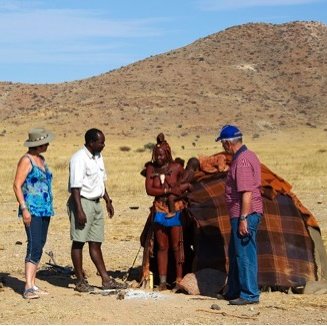
The signing of an agreement with Marienfluss Conse
It’s been over 15 years since the first joint venture agreement between Wilderness Safaris and Marienfluss Conservancy in Namibia to open Serra Cafema Camp was signed. Although the camp has been recently renovated, their partnership with the conservancy has not changed. The main reason behind is the camp’s choice to help create a thriving living environment for the semi-nomadic Himba people who inhabit a mosaic of villages in this vast stretch of wilderness.
The success of the agreement was certified through its renewal in 2017 for further ten years. Up-to-date direct benefits from Wilderness Safaris to the Marienfluss Conservancy include payment of bed-night fees to the Conservancy and local employment and skills transfer. Currently, 70% of Serra Cafema’s employees come from local areas. Himba people are assisted with transportation to the local clinic or hospital when needed, and funding to building a borehole for people and livestock has been provided. Employees benefit from a small shop for daily necessities, a transport service and a communication centre available for emergencies or to help staff keep in touch with their families as well as first aid supplies to help with minor injuries.
The camp has also contributed to the building of the first school in the Conservancy - Marienfluss School from Grade 0 to 7, with 70 students and six teachers. Children’s wellbeing is further taken care of by inviting them to participate in Children in the Wilderness camps.
See more great sustainability projects in Namibia
Communications
- Power supply notes
- There is a back-up generator.
- Communications
- WiFi is available here.
- TV & radio
- None
- Water supply
- Other
- Water supply notes
- All rooms are fully plumbed with hot and cold running water and flush toilets.
Health & safety
- Malarial protection recommended
- Yes
- Medical care
- There is an on-line doctor in Otjiwarongo who the staff can speak to if necessary, and the camp has emergency evacuation plans in place.
Quadbike warning: quad-biking is sometimes available as an activity from Serra Cafema. As with any potentially dangerous activity, it’s vital that you take responsibility for ensuring that you have adequate travel insurance prior to getting involved. Be aware that some insurances cover quad-bike activities only for bikes with lower engine ratings: check such clauses particularly carefully before you get on a bike. - Dangerous animals
- Moderate Risk
- Fire safety
- There are extinguishers in the suites and main areas
Useful info
- Disabled access
- On Request
- Laundry facilities
- Included
- Money
- There is a small digital safe in each suite
Plan and book your trip with Expert Africa
All of our trips are tailor-made, so we'll always adapt them to suit you. Talk to an Expert and let us plan and arrange your perfect trip.

Talk to an Expert
Call or email us now! We’ll match you with the Specialist in our team who is best suited to help you. Then together we can start planning your trip.

Set up your itinerary
Based on our experience and your ideas, your specialist will create a detailed, costed itinerary. We’ll refine it together, until we have a trip that you’re perfectly happy with.

Prepare for your trip
The same Specialist will make the seamless arrangements for your trip, send you detailed travel documents, and be available to answer any questions before you depart.

Travel with peace of mind
After you set off, you’ll be cared for by our partners in Africa, most of whom have worked with Expert Africa for decades. And if you ever need us urgently, we’re available 24/7.

When you return
We love to learn about your trip, and so will always be grateful if you’ve the time to give feedback to your Specialist when you return.
Serra Cafema's location
Look closer at the environment and surroundings of Serra Cafema.
Other lodges in Skeleton Coast & Kaokoland
Alternative places to stay in this same area.
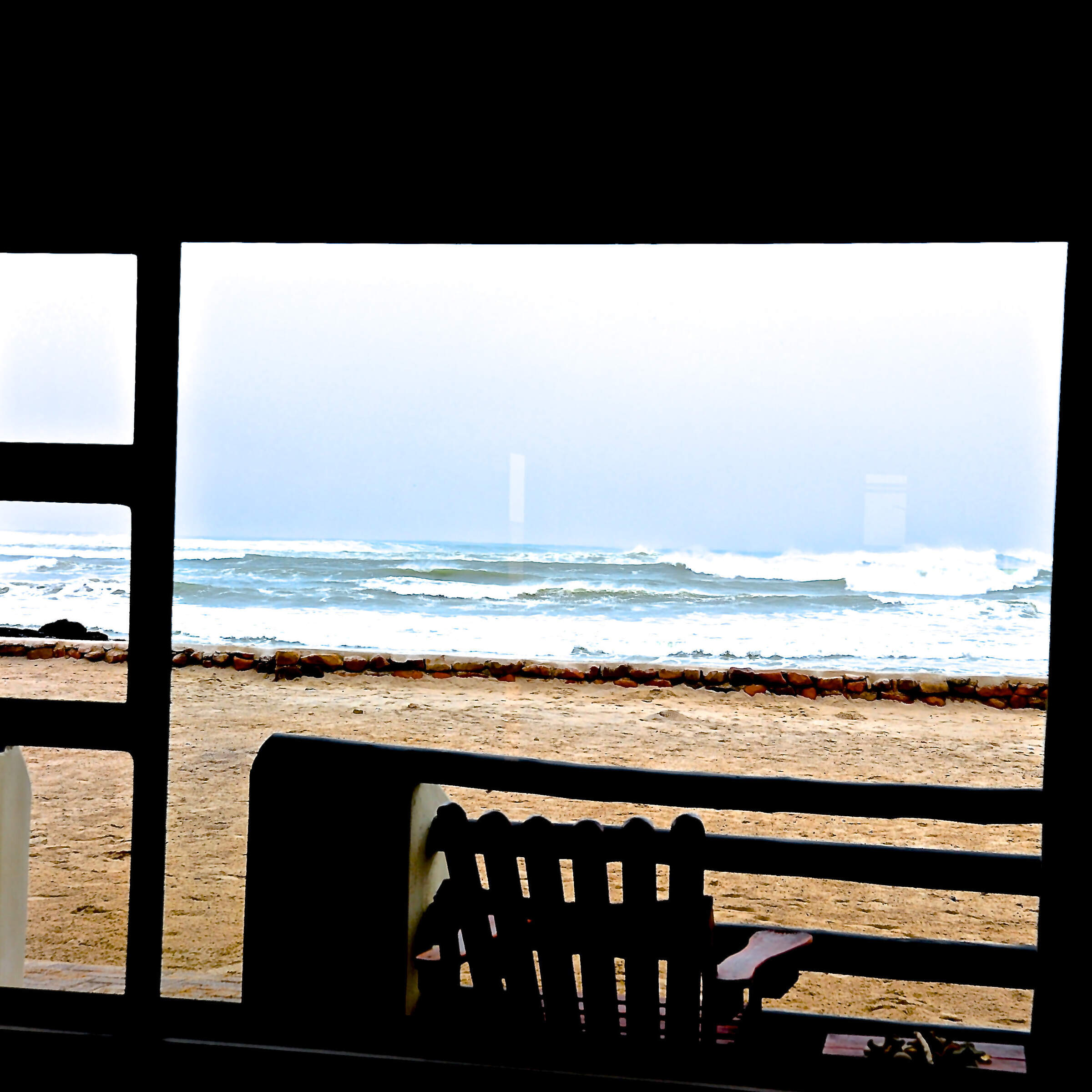
Cape Cross Lodge
Right on the Skeleton Coast, between Swakopmund and Damaraland, Cape Cross Lodge has easy access to Cape Cross Seal Reserve.
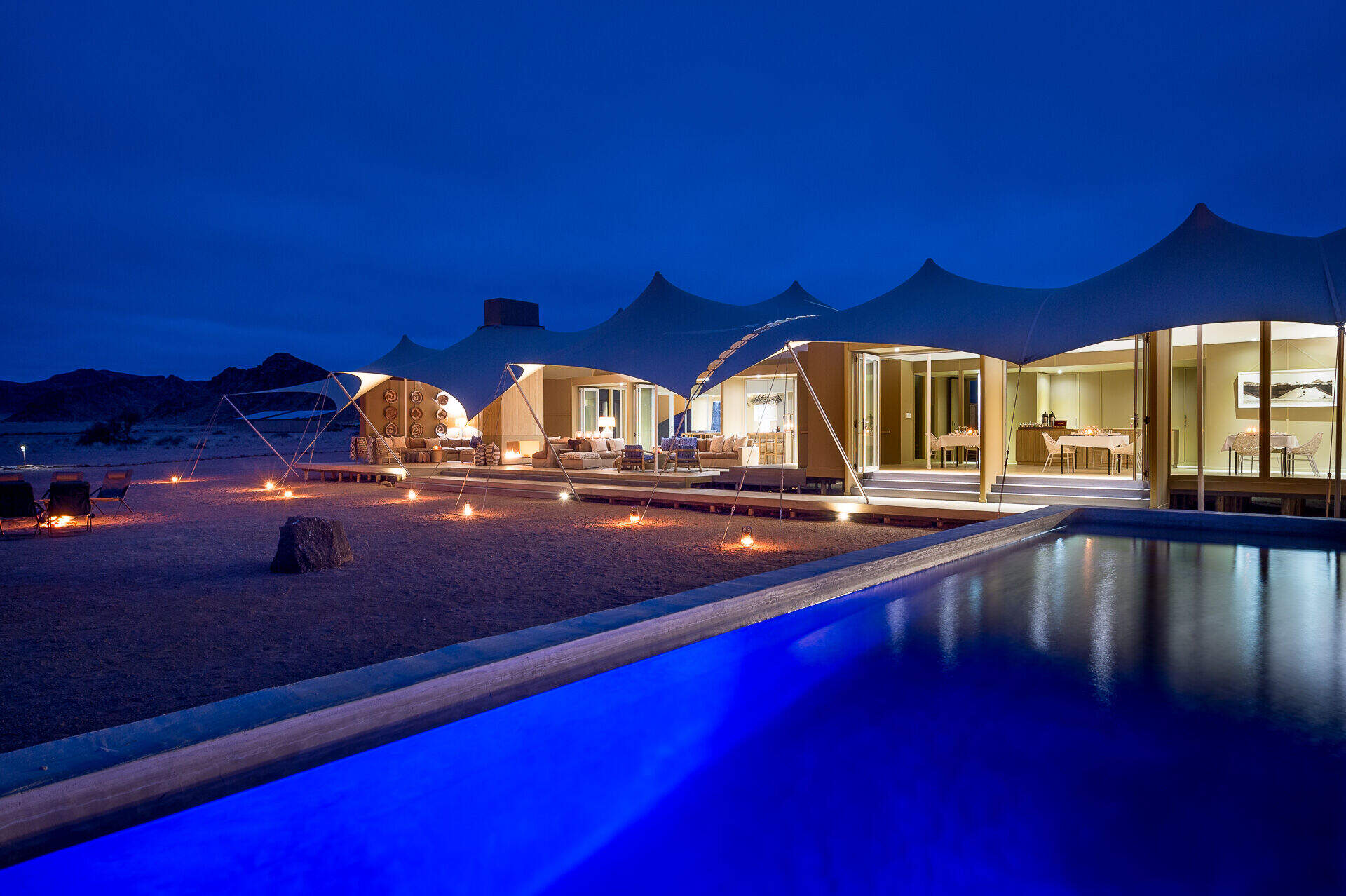
Hoanib Skeleton Camp Camp
Hoanib Skeleton Coast Camp is actually situated 42km inland in Kaokoland, this said they offer a superb guided day trip to the coast.
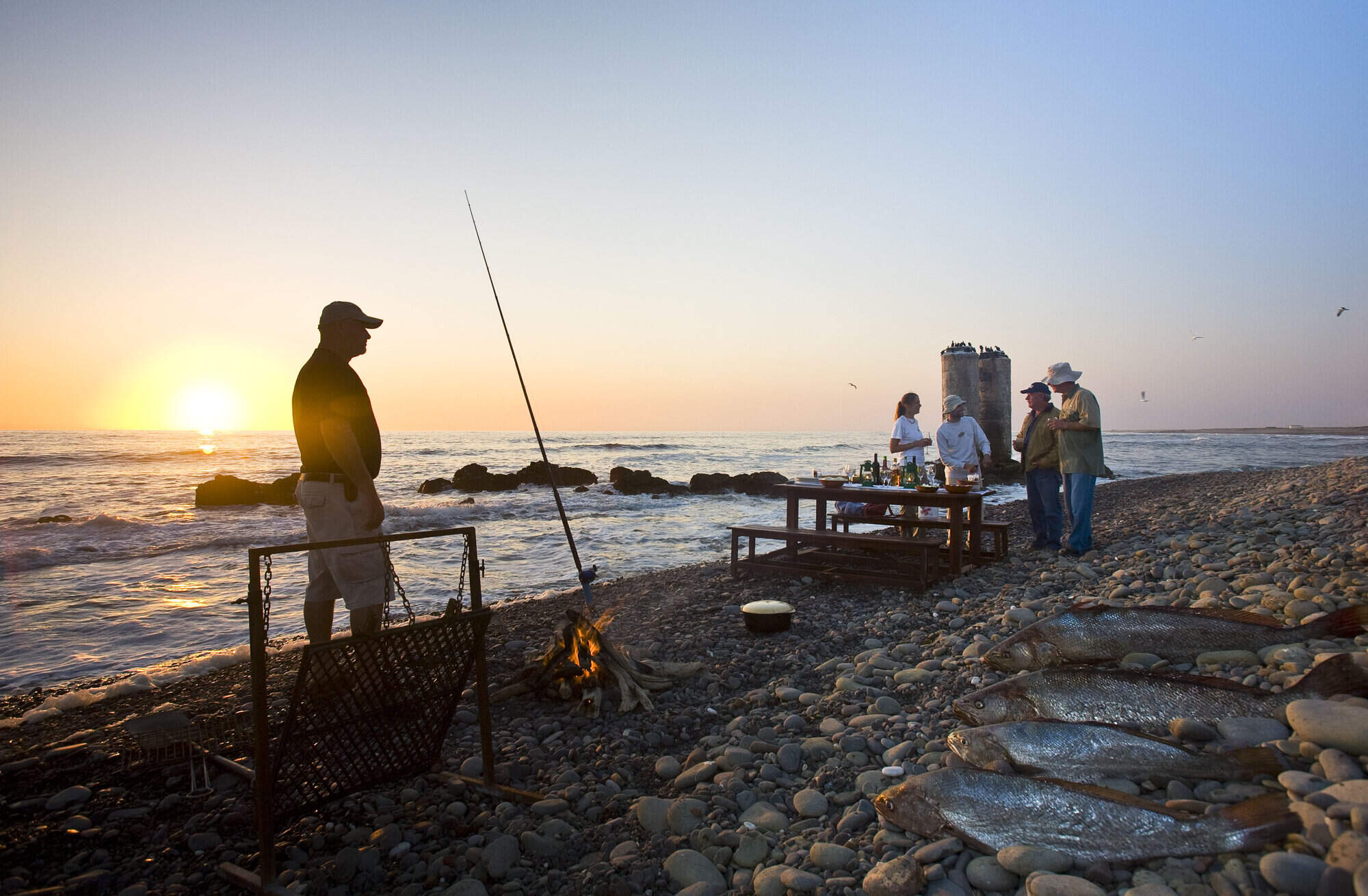
Terrace Bay
Terrace Bay is bleak. However, those that stay here come to experience the remote and inhospitable nature of the Skeleton Coast.
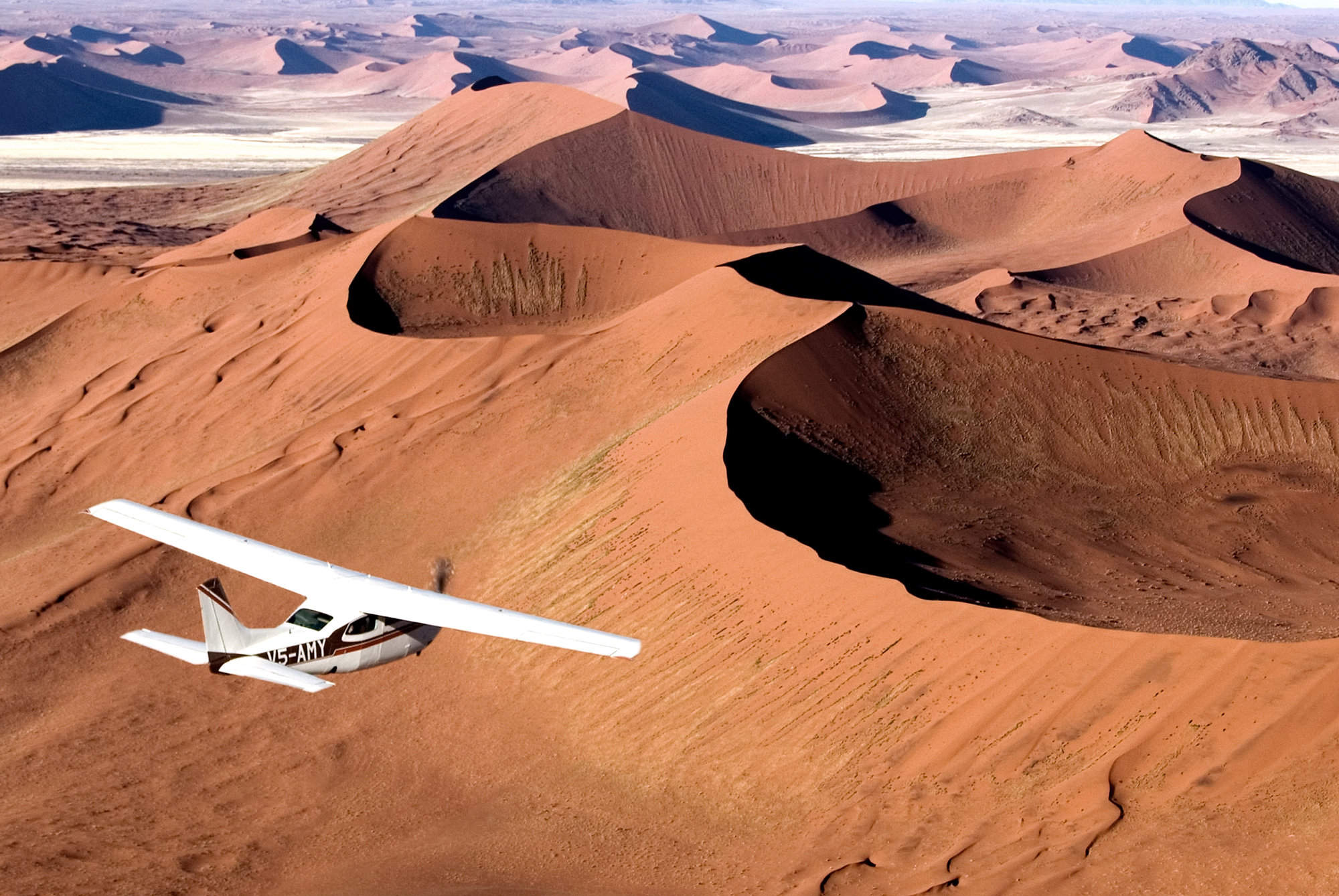
Skeleton Coast Safaris
Skeleton Coast Safaris is a small, family-run operation that has organised inspirational trips to this remote area of Namibia for nearly 50 years.
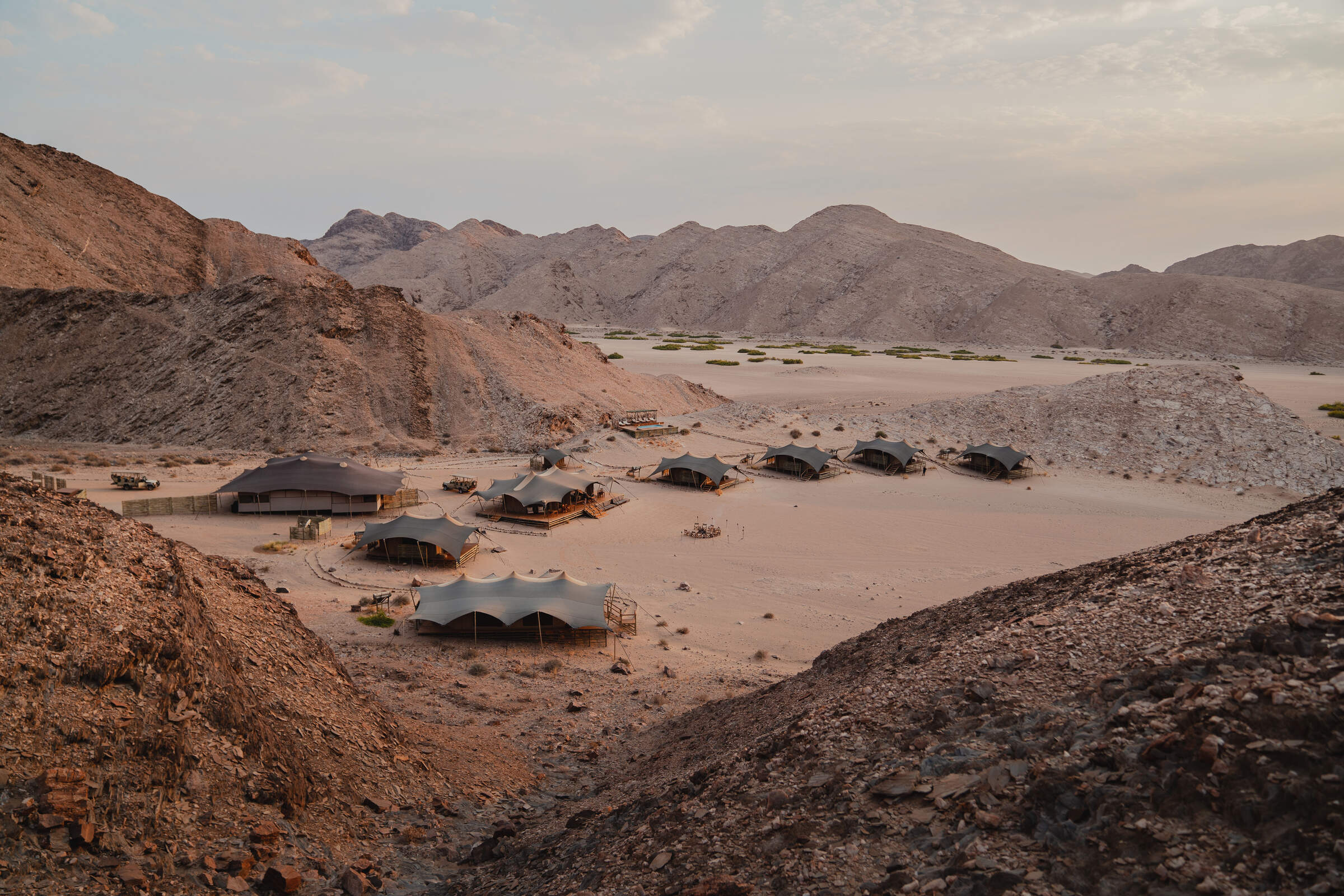
Hoanib Valley Camp
The intimate and remote Hoanib Valley Camp offers a rare chance to explore this dramatic corner of Namibia and to search for its sparse desert-adapted wildlife.
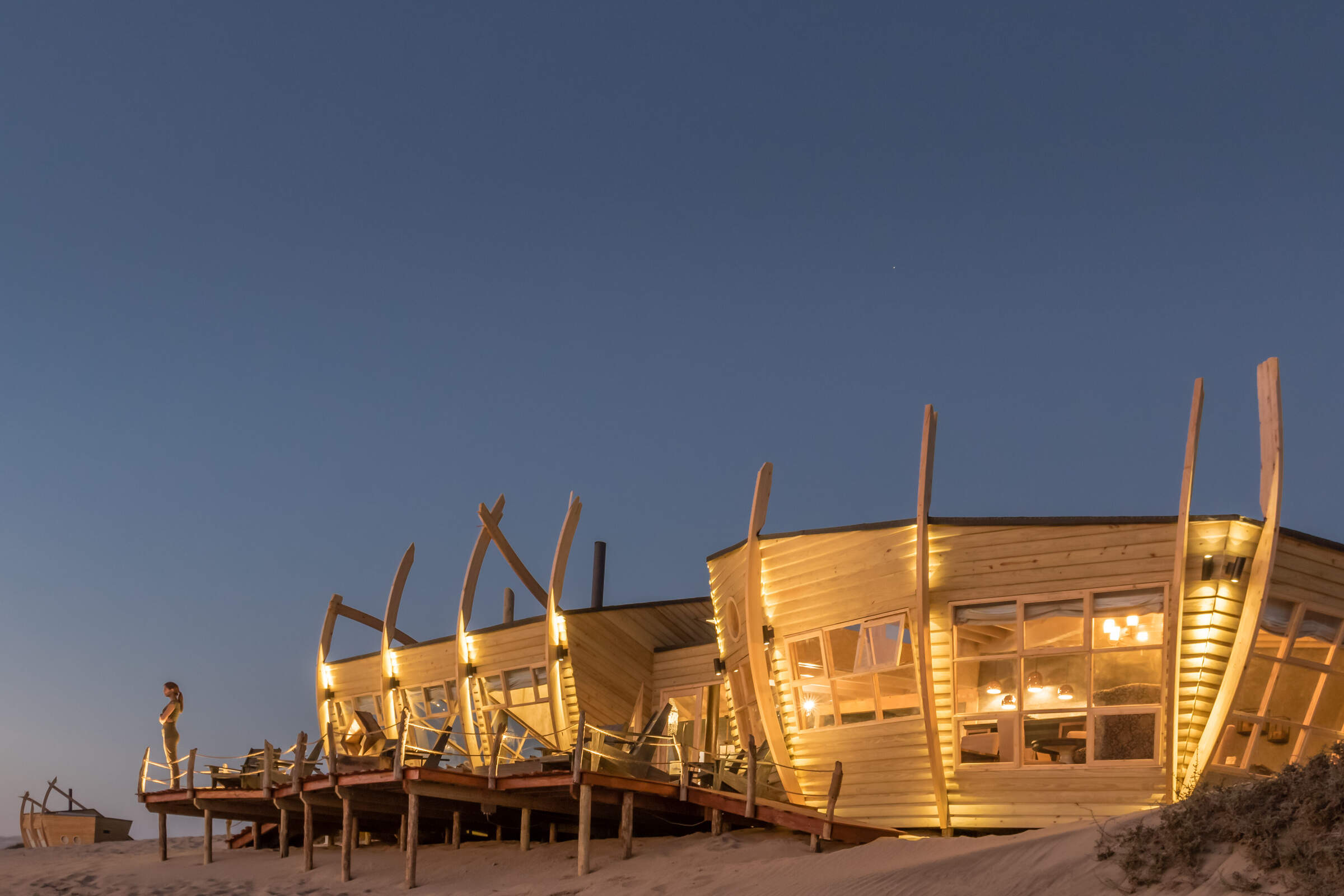
Shipwreck Lodge
The only property on this desolate stretch of coastline, the extraordinary Shipwreck Lodge opens up a new section of the Skeleton Coast National Park
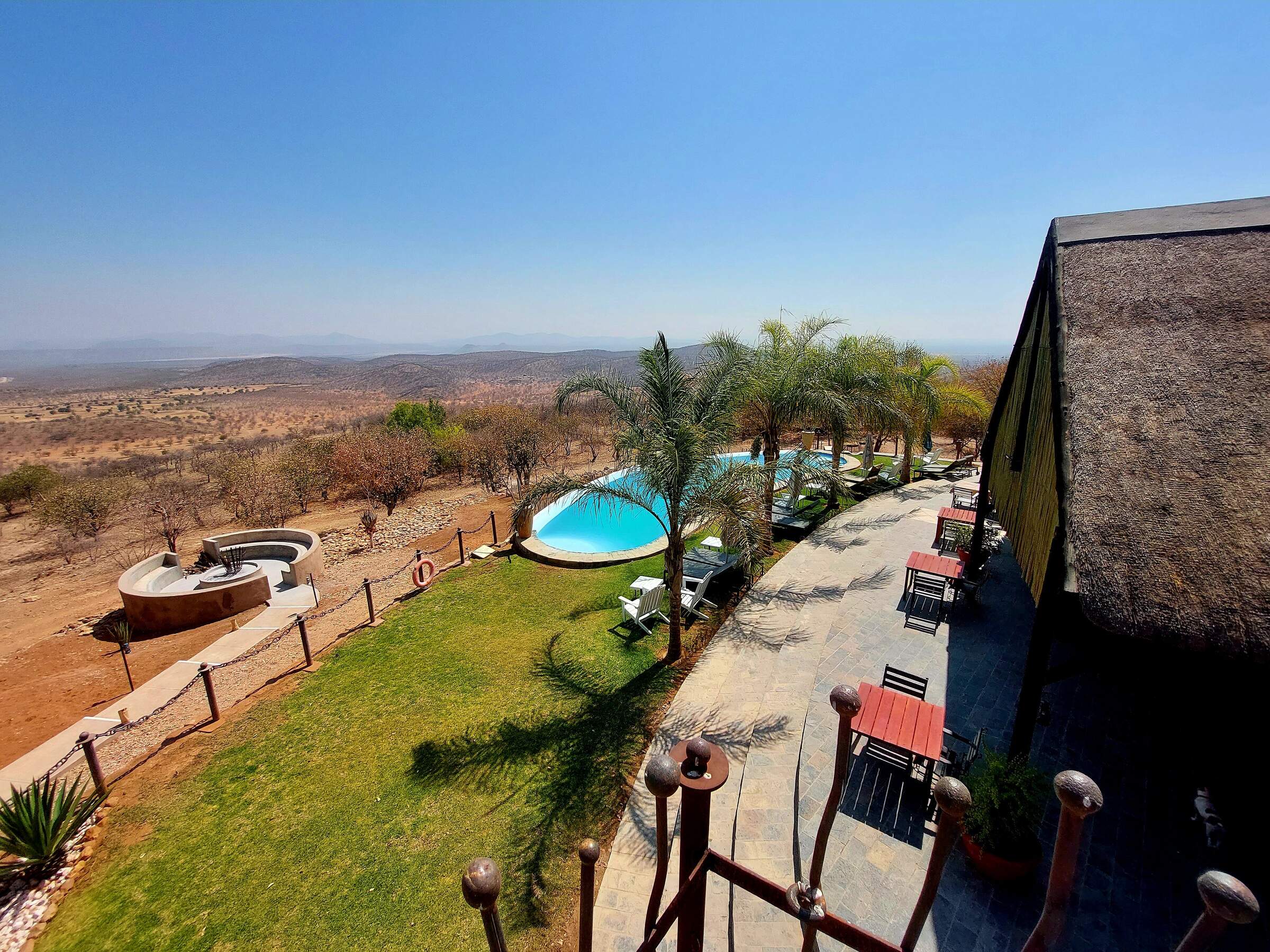
Opuwo Country Lodge
Opuwo Country Hotel provides comfortable accommodation is well situated for a night's stop before travelling into remote parts of Kaokoland.
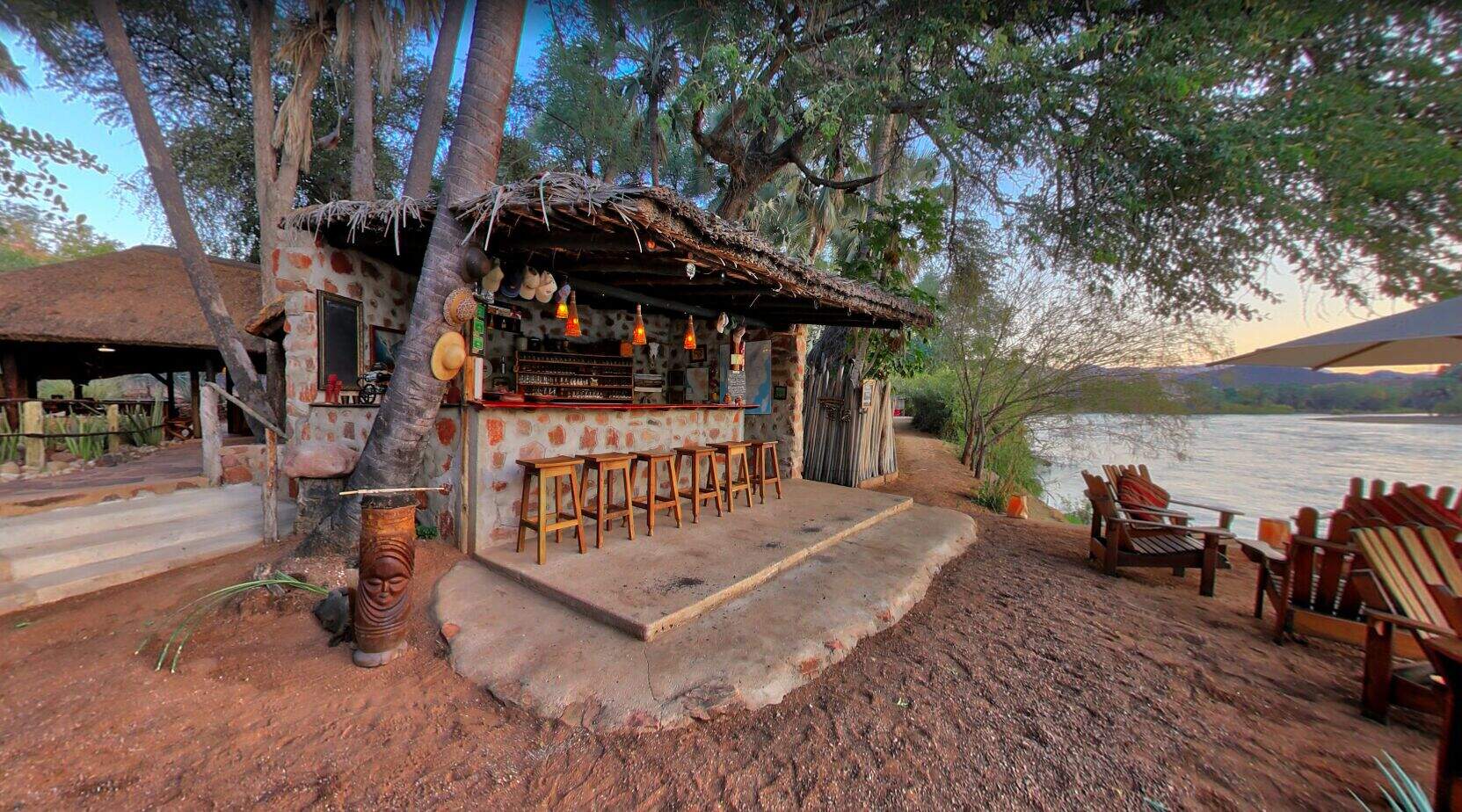
Epupa Camp
Epupa Camp is a welcoming oasis set on the palm-fringed banks of the Kunene River in north-west Namibia and close to Epupa Falls.
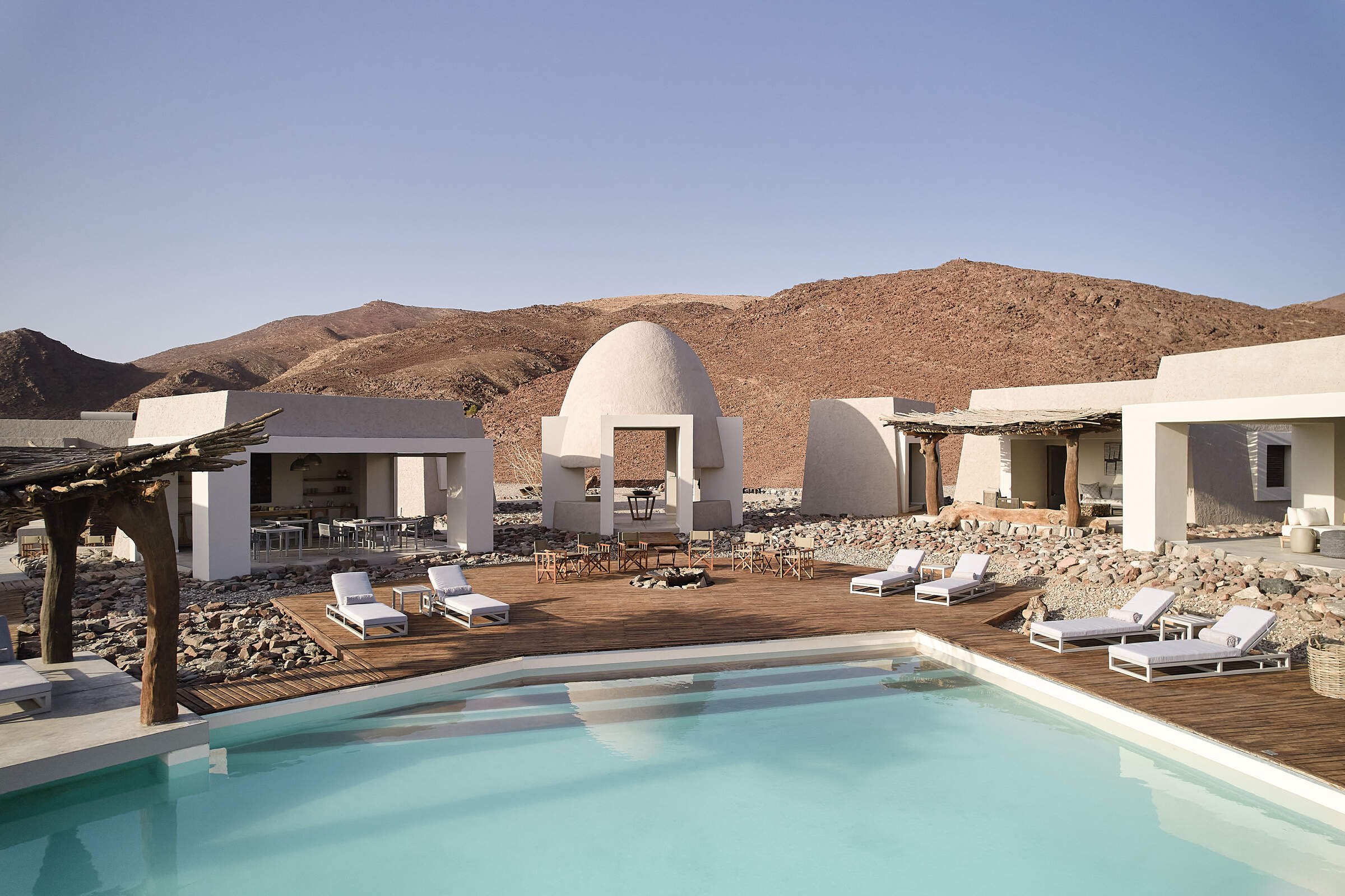
Okahirongo Elephant Lodge
Tucked away in Namibia's remote north-west, Okahirongo Elephant Lodge offers an unexpected level of luxury, with stunning views and plenty of activities.
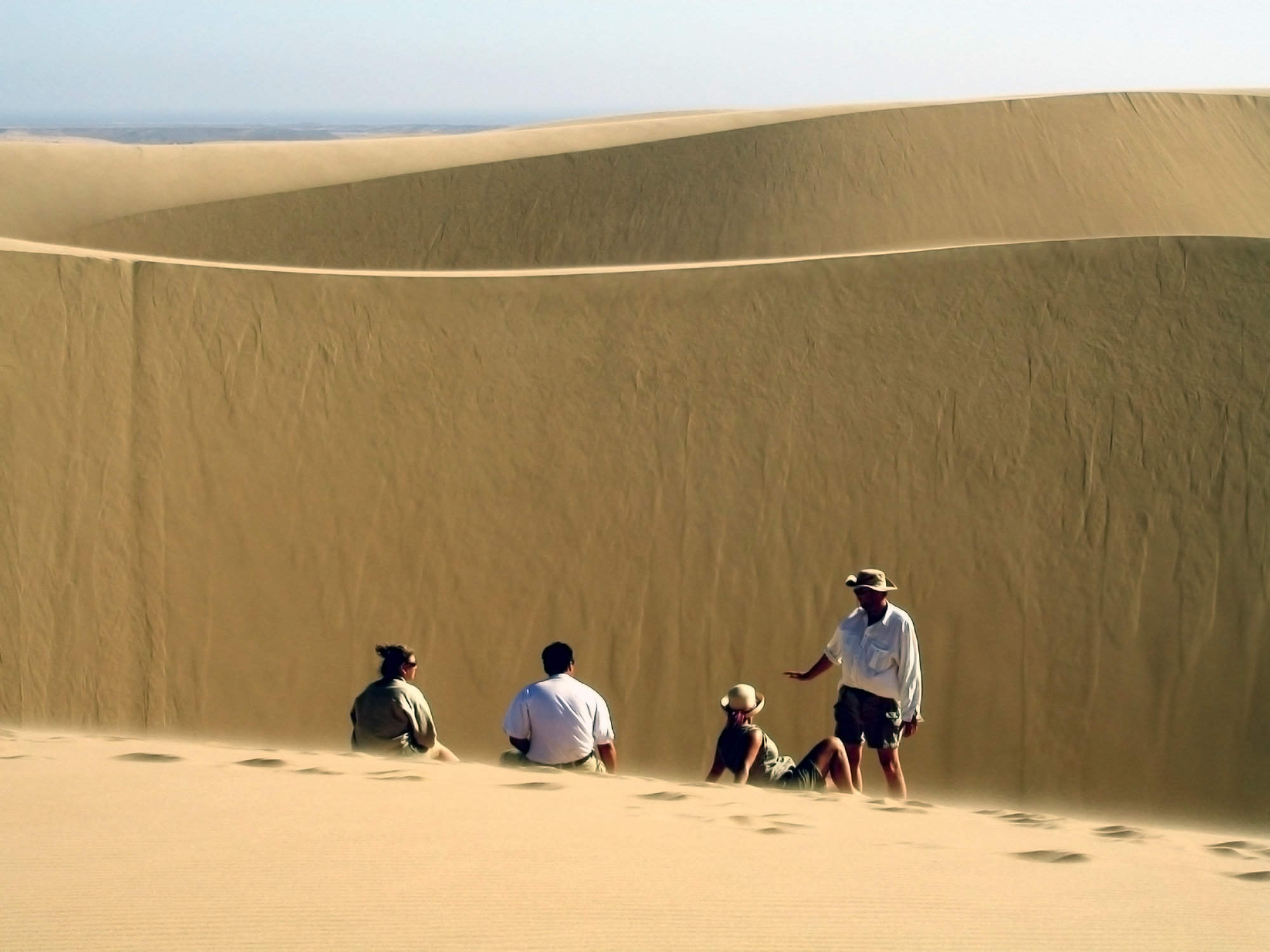
Kuidas Camp
Usually the first-night stop on a Schoeman Skeleton Coast safari, Kuidas is a very simple camp with stunning views of the Huab River valley.
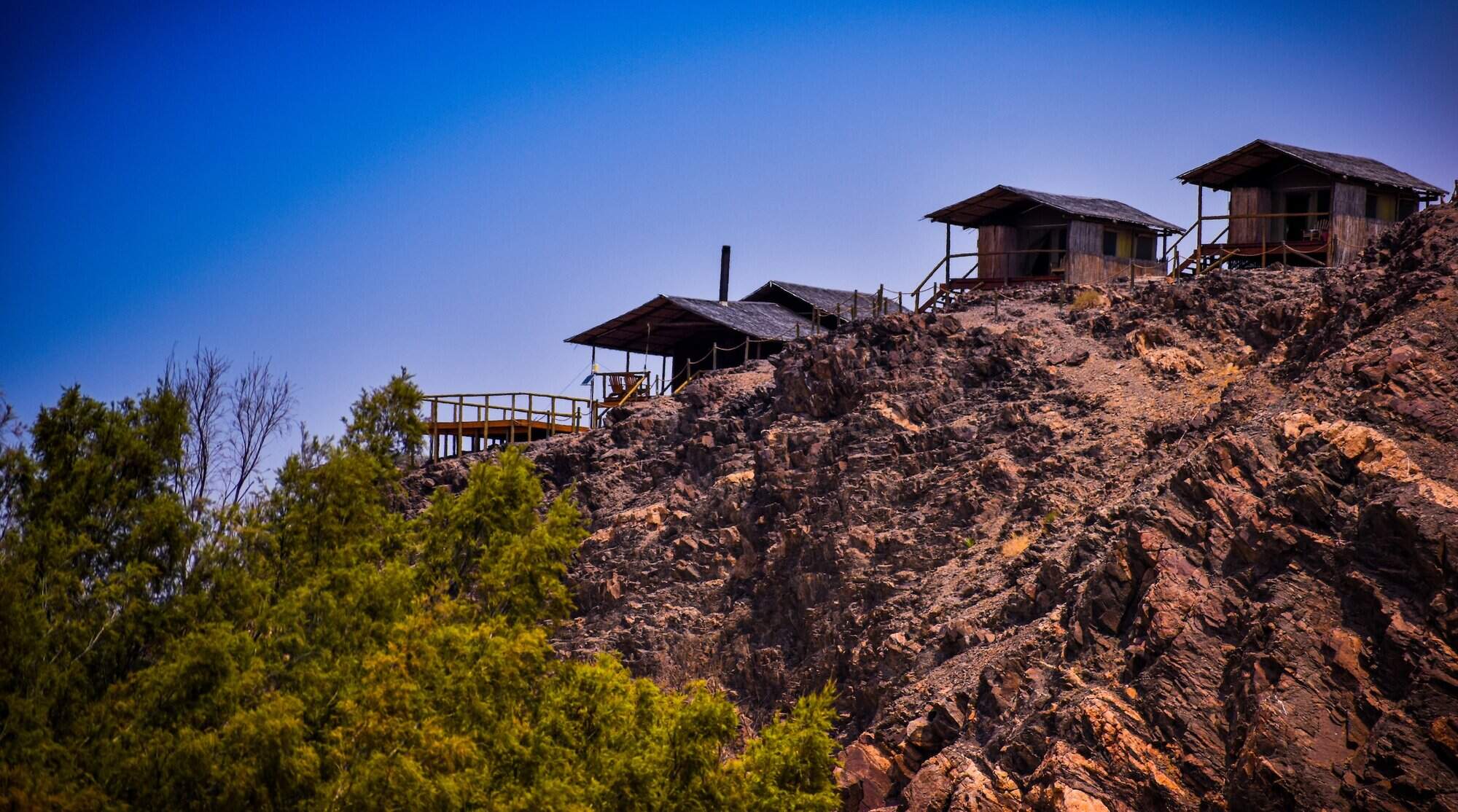
Leylandsdrift Camp
Used exclusively on the second night of a Skeleton Coast Safari, Leylandsdrift is in a beautiful location and is a good place to track desert-adapted elephants.
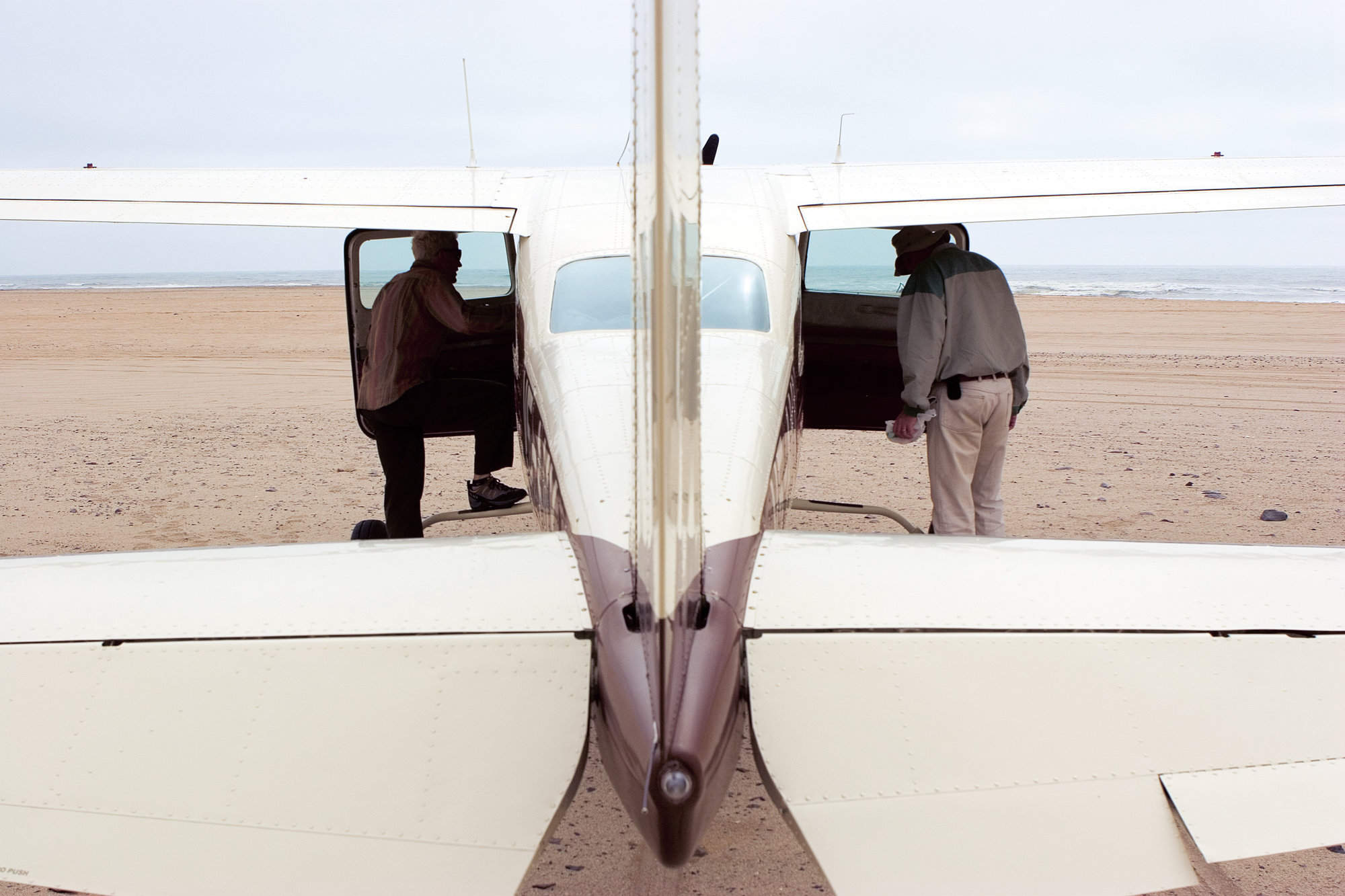
Kunene River Camp
Used exclusively on the final night of a Skeleton Coast Safari, the simple Kunene River Camp occupies a dramatic riverside location with some excellent birding.
When to go to Skeleton Coast & Kaokoland
Our month by month guide: What it's like to visit Serra Cafema in Skeleton Coast & Kaokoland
Jan
Feb
Mar
Apr
May
Jun
Jul
Aug
Sep
Oct
Nov
Dec
Skeleton Coast & Kaokoland in January
The Skeleton Coast experiences its rainy season in January, though precipitation remains sparse in this desert environment. The Ugab River and other ephemeral rivers may briefly come to life, creating a spectacle in the usually arid landscape. Despite the rain, temperatures can still reach around 30°C/86°F.
The greening landscape makes a refreshing change, especially in desert dune seas. Migrant species arrive in force, making it an excellent time for birdwatching along the coast and in areas like the Swakop River. In the northern part of the Skeleton Coast National Park, where rains are more reliable, desert animals look healthy, with shiny coats, due to the abundance of food.
- Variable weather with fog common along coast
- Cape fur seal pups growing rapidly at colonies
- Wildlife looking well fed, with shiny coats
- Few tourists, low rates at lodges and camps
- Occasional thunderstorms inland from the coast
Our view
This is not a great time to visit
Weather in January
Skeleton Coast & Kaokoland in February
February is typically the wettest month on the Skeleton Coast, though rainfall remains patchy. The central highlands near the park's eastern border and the Kunene River region can see heavier rain. Some February days are clear and hot, while others are cooler with building clouds, sometimes culminating in short, spectacular thunderstorms. These storms can generate flash floods in the park's ephemeral rivers, bringing them dramatically to life.
The landscape feels green and alive, with insects and smaller animals more easily seen. Many birds and animals in the Skeleton Coast National Park are raising their young during this time. However, the formation of small pools in the bush and thicker vegetation can make it challenging to spot larger wildlife as they disperse with easy to access water, especially in the northern sections of the park.
- Coastal fog persists, creating eerie atmosphere
- Seal colonies bustling with activity
- Desert-adapted wildlife more dispersed
- Low tourist numbers, great deals available
- Possible inland thunderstorms, coast stays dry
Our view
This is not a great time to visit
Weather in February
Skeleton Coast & Kaokoland in March
March usually sees the Skeleton Coast's main rains tailing off, though precipitation varies across the park. Many days are clear with strong sun, while others may end with short, spectacular thunderstorms, particularly in the inland areas. These storms reduce in frequency as the month progresses.
The landscape often appears vivid and green, especially around the Ugab and Hoanib rivers. Many birds and animals are finishing raising their young, so smaller animals and insects are in evidence. In the northern part of the Skeleton Coast National Park, where rains are generally heavier, pools in the bush and thicker vegetation can make it difficult to spot larger animals. However, this is an excellent time to observe desert-adapted wildlife thriving in the temporarily lush environment.
- Weather becoming more stable along coast
- Seal pups learning to swim at Cape Cross
- Animals well-fed after inland rainy season
- Wildlife harder to spot in expansive desert
- Few tourists, ideal for solitude seekers
Our view
A good time to visit, with pros & cons
Weather in March
Skeleton Coast & Kaokoland in April
April typically brings dry weather to the Skeleton Coast, with an ever-decreasing chance of rain. Temperatures fall below their summer peak but remain pleasant and warm during the day. Nights might have a slight chill, especially in desert areas. The rains usually leave many parts of the park verdant and green, so animals are in fantastic condition, often with fast-growing young in attendance.
With less dust in the atmosphere, photographers can capture clear shots of spectacular landscapes and healthy animals. Stargazing becomes increasingly rewarding as the month progresses. In the northern sections of the Skeleton Coast National Park, water and food remain in plentiful supply, so finding big game can be trickier than later in the year. However, this is an excellent time for observing a wide variety of wildlife.
- Cooler nights, pleasant daytime temperatures
- Migrant birds begin departing the coast
- Desert flora starting to dry out inland
- Easter brings slight increase in visitors
- Clear conditions for sharp photographs
Our view
A good time to visit, with pros & cons
Weather in April
Skeleton Coast & Kaokoland in May
By May, the Skeleton Coast is usually drying out fast. If the rains have been good, the land remains green, but wildlife starts to congregate at more permanent water sources like the Hoanib and Uniab rivers. Typical days are warm with crisp, clear mornings and blue skies. Evenings are usually cool, with temperatures potentially dipping below 10°C/50°F overnight, especially in desert areas.
The air quality and clarity can be amazing, making this an ideal month for photography of the park's dramatic landscapes. Many lodges still charge low season prices, although some have started to introduce higher shoulder season rates. May's good-value rates, increasingly good wildlife sightings, beautiful landscapes, and crystal-clear air combine to make this one of the best months to visit the Skeleton Coast.
- Mild days, cool nights ideal for exploration
- Excellent clarity for coastal photography
- Wildlife starting to congregate near water
- Lodges still offer good rates
- Great sea kayaking as seal pups take to water
Our view
A very good time to visit
Weather in May
Skeleton Coast & Kaokoland in June
June brings dry conditions to the Skeleton Coast. Skies are blue and usually largely cloudless. Days are lovely, warm, and dry; nights are cold, sometimes below freezing in desert areas. Most swimming pools at lodges are outdoors and too cold for all except the very dedicated. Warm clothing is essential for early morning and late evening nature drives.
In the northern part of the Skeleton Coast National Park, wildlife viewing enters its dry-season pattern, focusing around water sources. Photographers come to the area for the superb air clarity, with minimal dust or smoke. The Cape Cross Seal Colony becomes increasingly active as the young seals join parents on fishing trips. Historically, June rates have been low, but with increasing popularity, many lodges now count it amongst their high-season months.
- Clear, bright days with cold nights
- Prime time for scenic flights over coastline
- Wildlife gravitating to scarce water sources
- Most lodges move to high season rates
- Fishing season kicks off with great catch opportunities
Our view
A very good time to visit
Weather in June
Skeleton Coast & Kaokoland in July
July brings usually warm daytime temperatures upwards of 20°C/68°F to the Skeleton Coast, along with good sightings of desert-adapted wildlife such as elephants, giraffe, oryx, jackals and perhaps even lion. Watching elephants climb hillside dunes is often a highlight! Rain is very unusual, and clear skies make for great photographs of the stark desert landscapes.
Once the sun sets, temperatures cool rapidly, bringing cold nights that may dip below freezing in desert areas. Visitors should dress in layers and be prepared for cold early-morning and late-afternoon drives. Across the park, lodges charge high season rates; many are fully booked a year or more in advance, especially during European school holidays from the latter half of July to late August.
- Dry days, cold nights perfect for stargazing
- Whale watching season begins off the coast
- Excellent time to view desert wildlife
- Peak season rates at coastal accommodation options
- Cool temperatures for nature walks
Our view
A very good time to visit
Weather in July
Skeleton Coast & Kaokoland in August
August marks the height of winter on the Skeleton Coast. Expect cloudless skies and plenty of warm sun during the day, but nights can drop to freezing in desert areas. Visitors should dress in layers and bring warm clothes for chilly mornings and evenings. It's usually been 3-4 months since any significant rain, so the land is dry with only specialist desert plants standing out in their greenery. Many landscapes appear sparse and harsh, showcasing the raw beauty of the Skeleton Coast. Desert-adapted wildlife stays close to available water sources, helping to guarantee good animal sightings, particularly in the northern part of the park.
August is the most popular time to visit, especially for families. Advance booking is essential, often over a year in advance, for stays at the best lodges within the Skeleton Coast National Park.
- Clear skies, cold nights, warm days
- Marine mammals often seen on boat cruises
- Wildlife concentrated close to water points
- Busier season, advanced bookings recommended
- Ideal conditions for coastal adventure activities
Our view
Fantastic: the very best time to visit
Weather in August
Skeleton Coast & Kaokoland in September
September brings blue, cloudless skies and fantastic desert-adapted wildlife viewing to the Skeleton Coast. Rain is almost unheard of during this month. As September progresses, both days and nights get warmer. In some areas, daily maximums can reach the low 30s Celsius / mid 80s Fahrenheit, although low humidity ensures this feels comfortable.
The air becomes dustier, occasionally augmented by smoke from distant fires, creating a hazy atmosphere that can challenge photographers - though atmospheric sunsets are a delight. In the Skeleton Coast National Park, animals stay close to remaining water sources, making September one of the best months for viewing desert animals such as elephants, oryx and even lion. Consequently, September is one of the Skeleton Coast's most popular months for visitors. Seeing how remote communities exist in this barren setting is often a highlight.
- Quickly warming temperatures, still clear skies
- Fascinating insights to Himba communities
- Fantastic desert wildlife viewing in river valleys
- High season rates, lodges often fully booked
- Occasionally dusty skies create spectacular sunsets
Our view
Fantastic: the very best time to visit
Weather in September
Skeleton Coast & Kaokoland in October
October is usually the hottest and driest month on the Skeleton Coast. Temperatures build as the month progresses; towards the end, daily highs may exceed 40°C/104°F, though the low humidity makes even this heat bearable. In exceptional years, isolated rain showers may fall in late October. More usually, the end of the dry season sees wildlife watching at its best, particularly in the northern part of the Skeleton Coast National Park. Sightings of unusual species such as brown hyena and desert lion become more regular as the animals have limited water sources.
October is popular among landscape and unique wildlife enthusiasts and commands peak-season prices, even if dust and smoke may make the air hazy, challenging photographers. Visitor numbers can fade towards the end of the month, allowing a window for last-minute bookings at some lodges.
- Hot, dry conditions prevail along coast
- Marine wildlife abundant in coastal waters
- Exceptional desert game viewing in Hoanib area
- Still peak visitor time, book accommodations early
- Dining under stars on balmy nights in the desert is special
Our view
A very good time to visit
Weather in October
Skeleton Coast & Kaokoland in November
November is unpredictable on the Skeleton Coast; sometimes dry and hot, sometimes cloudier and cooler. Typically, mornings are hot and cloudless, with clouds appearing in the afternoon. Humidity builds and eventually breaks, resulting in spectacular thunderstorms that bring convection rainfall in late afternoons. Such storms are typically sparsely distributed and highly localised, being completely absent from the most arid desert areas. Places that do get good rain, like the Hoanib and Uniab river valleys, flush green with a tangible feeling of new life, softening the harsh landscapes.
Many mammals give birth to their young during this period. Once the rains come, wildlife disperses in search of food, and game viewing in the northern part of the Skeleton Coast National Park becomes more challenging. However, this is a great time for birdwatchers, with migrant species arriving in breeding plumage.
- Variable weather as summer approaches
- Cape fur seals begin breeding season
- Wildlife dispersing with first inland rains
- Shoulder season begins, rates become moderate
- Landscapes transforming with possible rain
Our view
A good time to visit, with pros & cons
Weather in November
Skeleton Coast & Kaokoland in December
December is often a drier period between the short and long rainy season. Clear mornings can give way to building clouds and spectacular evening thunderstorms, but often with little to no rain. These storms make for atmospheric skies and an interesting time for photographers. But even relatively short showers enable plant life to erupt, carpeting this thirsty land in green and providing food for the young animals as they grow. Animals disperse widely across the Skeleton Coast National Park, which can make game viewing more challenging than in the dry season. Many birds are breeding and sporting their most colourful plumage.
Christmas and New Year fall within local summer holidays, so accommodations can be surprisingly busy, especially in and around the park's coastal areas where temperatures are cooler.
- Warmer temperatures, chance of coastal fog
- Seal breeding season peaks at colonies
- Desert-adapted wildlife often have young
- Holiday period brings more visitors to coast
- Possible inland rains create lush landscapes
Our view
This is not a great time to visit
Weather in December

Looking for inspiration on where to travel next?
Visit our trip chooser to explore your options and find inspiration for your perfect African adventure
Inspire me